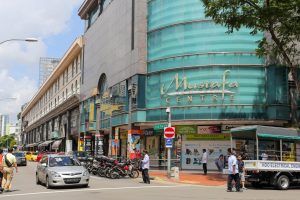Stories from the margins: Indian business communities in the growth of colonial Singapore
March 22, 2022

Prevalent historical narratives of Singapore have largely ignored the role of Indian pioneers such as Narayana Pillai, who was one of the earliest Indian businessmen to come to the island. Born on 21 March 1879, Pillai was also an interpreter and clerk who accompanied Raffles when he first landed in Singapore. Since pre-colonial times, Indian business communities have played a significant role in maritime trade networks and continued to be a part of Singapore’s developing society and economy.
In ‘Stories from the margins: Indian business communities in the growth of colonial Singapore’ (Journal of Southeast Asian Studies, 2019), Dr Jayati Bhattacharya (NUS South Asian Studies Programme) explores the history of Indian networks during the colonial period, as well as their patterns of integration and role in the development of Singapore.
The acquisition of Singapore completed the British India empire. As Singapore developed as a free port, Indian merchants and traders formed a part of the voluntary migrants. Large numbers of Indian labourers, mainly lower-caste Tamils, were also brought in to fill the gap in the workforce. However, the largest group of immigrants were the Chinese, and Singapore developed as a predominantly Chinese city.
Whereas most of the Chinese businessmen operated within the Southeast and East Asian regions, the Indians traded extensively with the Japanese. When tensions between China and Japan grew, the Indian merchants took advantage of Japan’s ‘export drive’ as prices offered by Japanese dealers were much lower in comparison to other sources.
Business-focused migration outside India was mostly temporary, as most businessmen left with the intention to return to their homeland with earnings for their retirement. However, their presence supported the visibility and emergence of the merchants who opted to stay in Singapore permanently. The rising momentum of nationalism in the Indian subcontinent also led to parents choosing to send their adult children to Singapore rather than making them vulnerable to the potentially dangerous struggle for independence.
The introduction of English education in the Indian subcontinent to led to the creation of moderately educated skilled and semi-skilled Indian workers who had a distinct advantage of employment in the colonial public service over other races in Singapore. The Indians also dominated in the police and armed force personnel in terms of numbers.
However, in post-1965 Singapore, many of the Indians’ colonial links were disrupted. Many Indian traders who survived on regional trade lost out badly. By 1985, the number of businessmen who engaged in the wholesale textile business in the High Street area decreased from around 500 to 40.
The Indian regional merchant groups had to reorganise themselves with new economic models to make their ventures profitable and accommodate the new system. Additionally, while most big names amongst the Indian business communities were founded on hereditary caste-based kinship and trade networks, the Indian business communities in Singapore were mostly accommodating of British interests rather than Indian capitalist lobbies in the subcontinent. The Indian business groups in Singapore were therefore ‘a minority within a minority community’ and had a substantial and visible presence in Singapore.
Read the article here.
